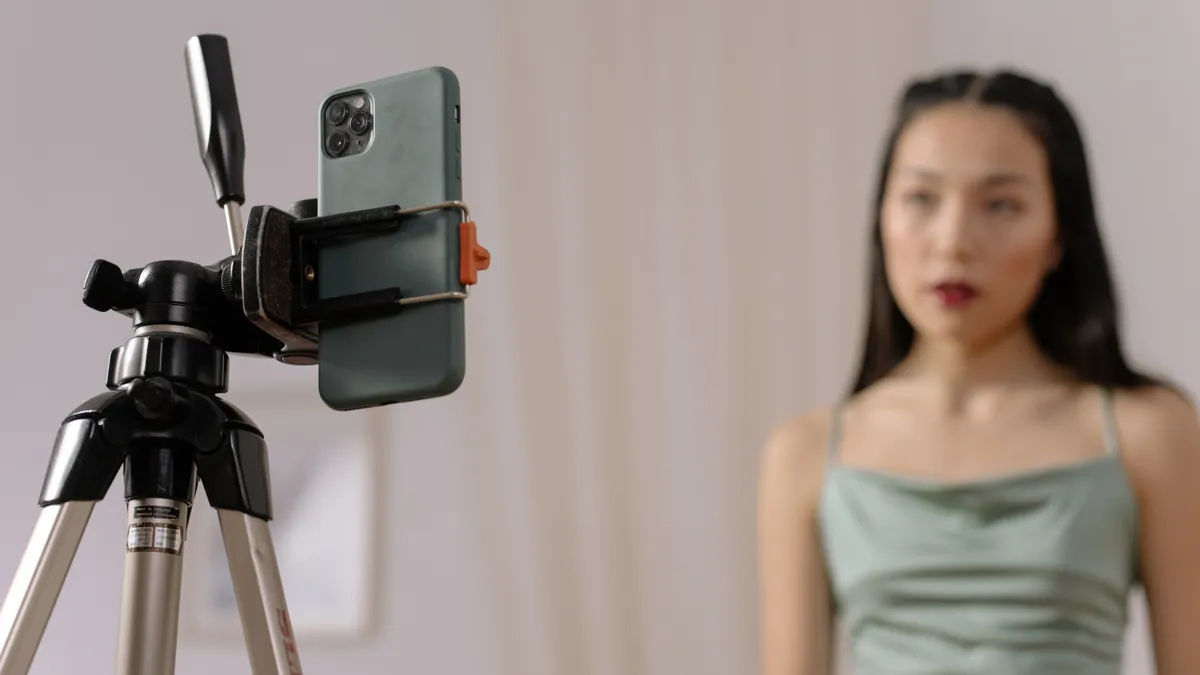Dive Brief:
- Brands are increasingly shifting budgets to power creator-driven marketing campaigns, with 66% reporting they spent more on this area in the past year compared with previous years, according to a new CreatorIQ and Tribe Dynamics survey shared with Marketing Dive. Additionally, 52% noted that their creator marketing teams have expanded to support this growing trend.
- While Instagram and Instagram Stories remain the most popular social platforms for creator campaigns, TikTok has forced marketers to rethink their approach for finding and engaging with consumers. About 96% of brands and 88% of influencers reported regularly using Instagram Stories, while 46% of brands and 42% of influencers said they regularly use TikTok.
- Amid swelling budgets, emerging platforms like TikTok and the proliferation of social commerce, brands and creators will continue to experiment and seek out best practices for the evolving influencer marketing landscape. The report is based on a survey 150 brands and 200 influencers.
Dive Insight:
CreatorIQ's 2022 report on influencer marketing suggests the tactic will only continue to surge in popularity among brands in the year ahead. Nearly half (48%) of brands CreatorIQ surveyed reported investing at least $100,000 annually on creator marketing, while 10% spent over $1 million. Those numbers, along with the space's growth compared with past years, signal ripe opportunities for marketers to tap into influencers' large and dedicated followings.
Meanwhile, specific approaches and platforms surrounding influencer marketing continue to evolve over time. Methods that once worked are no longer effective for brands that look to make authentic connections with consumers via social media personalities. Less polished, user-created content (UCC) is the media style du jour, accounting for 39% of media hours versus 61% for traditional studio content, the Consumer Technology Association and YouGov found in early January.
Together, the CTA and CreatorIQ reports highlight the creator economy's growing role in the media landscape, particularly among teens, with the cohort increasingly streaming user-created videos the way previous generations watched TV.
"Over the past two years, the creator economy has blossomed into a full-fledged social media force that has changed marketing and business strategies around the globe," CreatorIQ COO Tim Sovay said in emailed comments. "Creators have the power to transform industries, platforms and even boardroom conversations, so savvy marketers need to know how the landscape ahead is changing, and what's causing it to change."
Newer platforms like TikTok have forced more established sites like Facebook to keep up with changing user habits and demands. Facebook in December introduced a professional mode for profiles in the U.S., allowing creators new revenue opportunities and providing tools to help grow their audience. The company also debuted support for Facebook Live in the platform's Stories bar, letting creators share their livestreams in Stories to boost discoverability. The social media behemoth's announcements signaled a greater emphasis on enticing and supporting creators, online influencers who possess large, engaged audiences and carry significant sway in consumer trends and purchases.
Facebook and its sister app Instagram aren't alone in unveiling tools and new features to woo creators and their fans. TikTok is a clear driver of this shift toward supporting creators, with Meta CEO and founder Mark Zuckerberg in October calling the video-sharing app "one of the most effective competitors we have ever faced."















